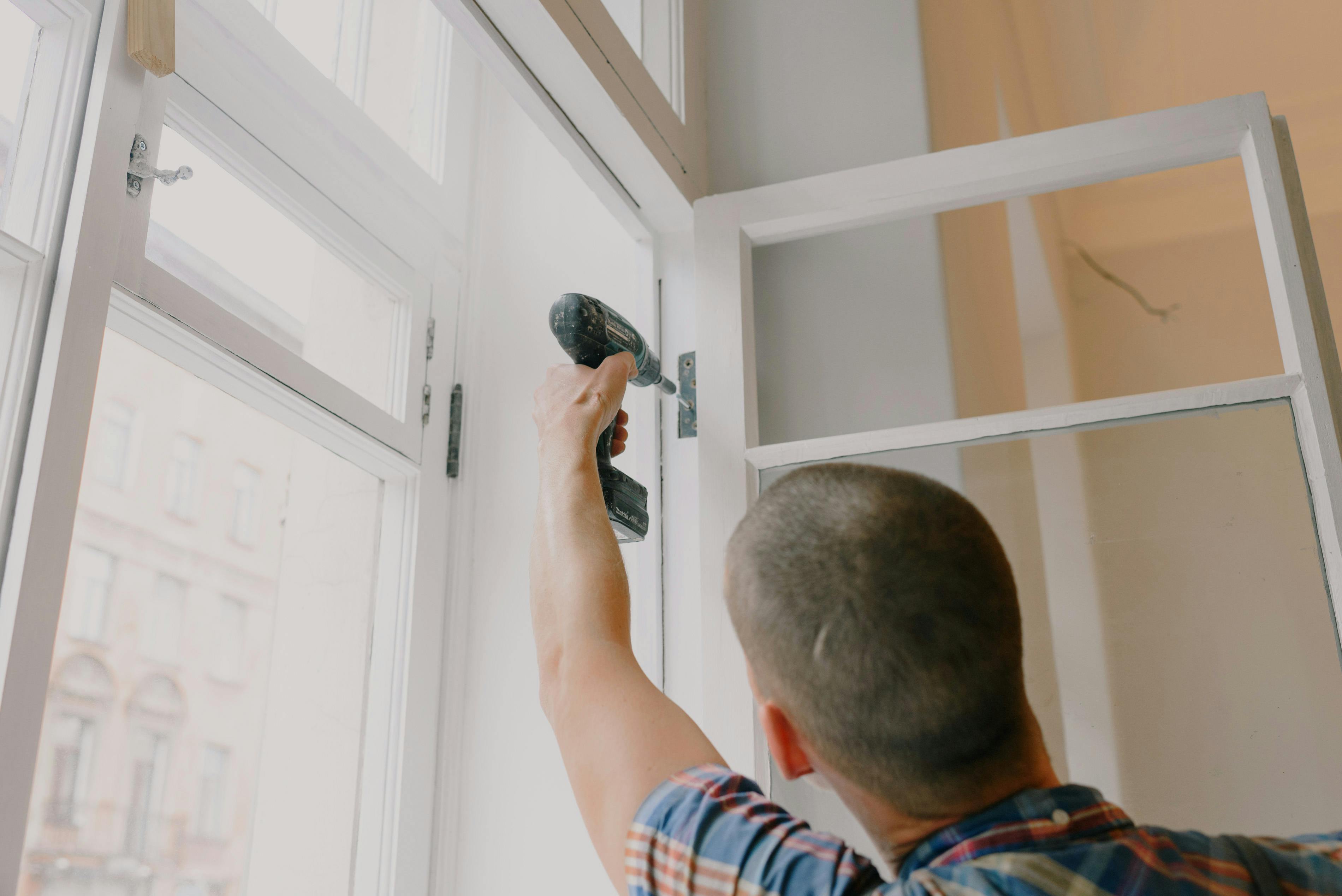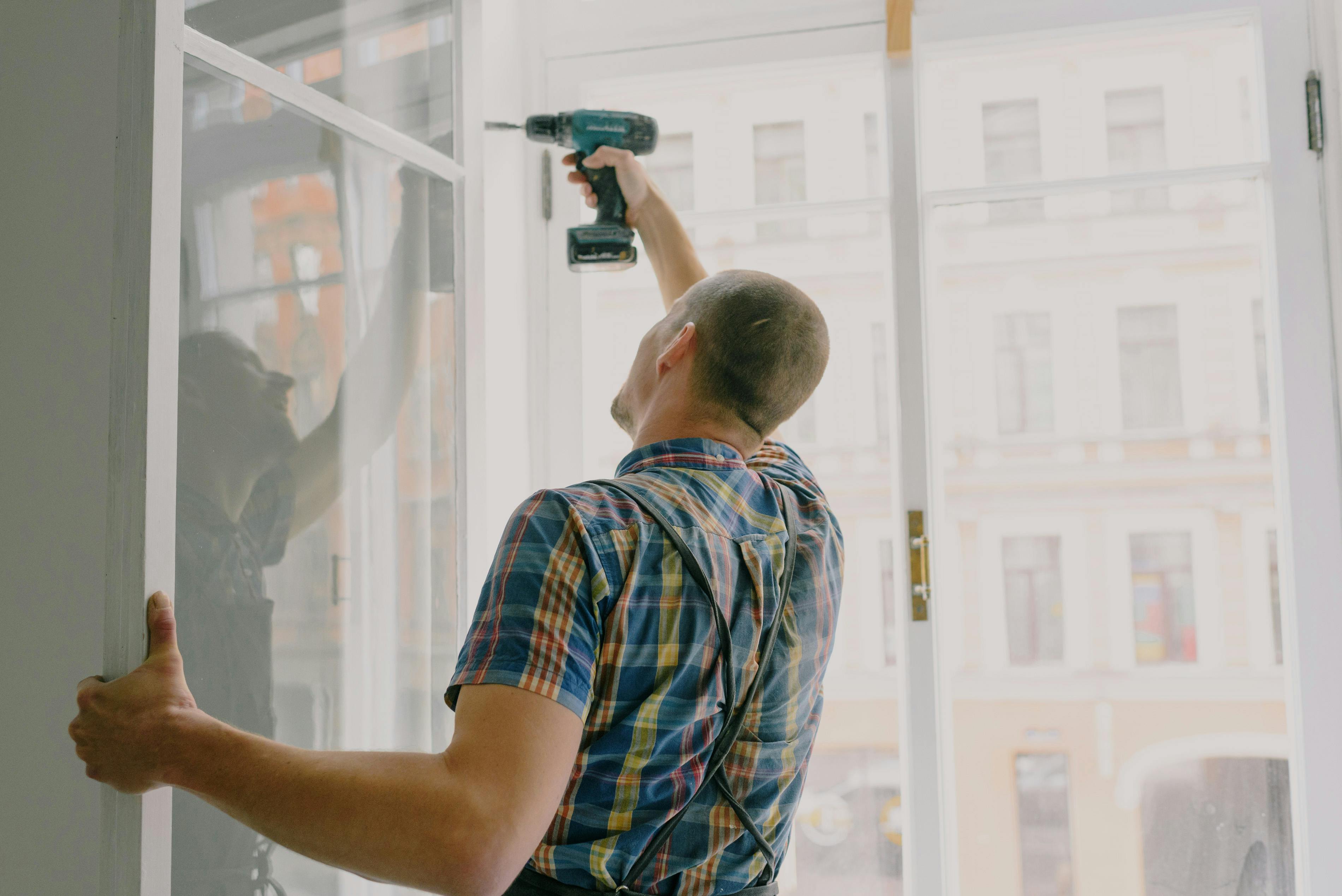A water heater is a major appliance that is necessary for many households. While it may seem like a daunting task to install a water heater, many handymen are capable of performing the installation. With the right tools and knowledge, a handyman can install a new water heater quickly and efficiently.Installing a water heater involves several steps. First, the old water heater needs to be removed and disposed of properly. Next, the new water heater should be placed in its desired location, and all necessary connections should be made. This includes connecting the cold and hot water supplies, connecting the venting system, connecting a drain line for draining the tank, and connecting an expansion tank if required. Once all of these connections are made and tested for leaks, the gas or electric supply needs to be connected and tested to make sure it is working properly. Finally, all of the valves need to be opened so that water can flow into the tank and heat up.
Tools Needed to Install a Water Heater
Installing a water heater requires certain tools and equipment. Depending on the type of water heater, the tools and materials needed will vary. For example, when installing a gas water heater, additional supplies such as venting materials may be necessary. Before beginning installation, make sure you have all of the necessary tools and materials on hand to complete the job.
The basic tools needed to install a water heater include screwdrivers, a level, pliers, adjustable wrench, pipe wrench, soldering supplies (for copper pipes), and an Allen key or hex key set. If your water heater is electric, you’ll also need a voltage tester to ensure that power is off before you start working on it. It’s also important to have safety gear such as goggles and gloves when working with hot water tanks.
Other materials will be necessary depending on the type of tank being installed, such as drain pans for electric tanks or venting components for gas tanks. Make sure you have all these items before beginning your project so that you can complete it in one go without having to run to the store for something you forgot. Additionally, always read through instructions carefully before starting any installation project in order to ensure best results and safety.
Water Heater Safety Precautions
It is important to take safety precautions when installing a water heater. This includes taking the time to understand the local building codes and safety requirements, as well as following all instructions carefully. Additionally, it is important to ensure that the water heater is installed in accordance with all manufacturer specifications.
When working on the water heater, it is important to be aware of any potential hazards such as electric shock or fire. It is also important that the area around the water heater is free of combustible material and any flammable vapors are cleared from the area. It is also advised to wear appropriate clothing and protective equipment such as gloves, eye protection, and a face mask while working on the unit.
It is also important to ensure that there are no leaks in any of the fittings or connections before turning on the water supply. The installation should be checked for proper grounding and electrical connection according to local codes. If you are unsure about any aspect of the installation, it may be wise to seek professional help from a qualified plumber or electrician.
Finally, it is important to keep an eye out for signs of corrosion or other damage after installation of a new water heater. This can help prevent future safety issues by catching problems before they become too serious. Regular maintenance can also help prolong the life of your water heater and help keep your family safe from potential hazards associated with its use.
Do You Need a Professional Plumber or Handyman to Install a Water Heater?
Installing a water heater is a complex process that requires special tools and knowledge. Depending on the type of water heater, you may need to hire a professional plumber or handyman to get the job done. Plumbers are typically trained to install all types of water heaters, including gas and electric models, as well as tankless ones. They also have the necessary plumbing experience and know-how to properly install the water heater without causing any damage or leaks.
On the other hand, handymen are usually less equipped than plumbers when it comes to installing complicated systems like water heaters. While they may be able to handle smaller tasks such as changing out an old tank for a new one, they likely won’t have the necessary expertise or tools for more complex jobs. A good rule of thumb is that if your water heater installation requires any sort of major plumbing work, such as running new pipes or replacing fittings and valves, you should always hire a professional plumber.
When it comes down to it, there’s no substitute for experience when it comes to installing a water heater. Whether you opt for a professional plumber or handyman depends on your budget and the complexity of the job at hand. In either case, make sure you do some research on who you hire and ask plenty of questions so that you can be sure your new water heater is installed correctly.
How Long Does It Take to Install a Water Heater?
The amount of time it takes to install a water heater will vary depending on the type of water heater you choose and the complexity of the installation. Generally, it takes between two to six hours for an experienced plumber or HVAC technician to install a tankless water heater, while a tank-style water heater will take two to three hours. If your situation requires additional plumbing or electrical work, then it may take longer. Additionally, if your home has an existing gas line, then the installation process may be completed more quickly.
When considering how long an installation will take, keep in mind that certain components must be installed in order for the water heater to function properly. These include a cold and hot water supply line, an expansion tank and a drain line for draining away any excess sediment or other debris from the unit. Depending on the requirements of your particular unit, additional components may need to be installed as well. Once all components are installed and connected, then your plumber or HVAC technician can begin testing for any potential issues before turning on the unit.
Overall, installing a new water heater is usually quite straightforward but can take anywhere from two to six hours or longer depending on the type of unit you choose and the complexity of your home’s existing plumbing system.

The Benefits of Having Your Water Heater Professionally Installed by a Handyman
Having your water heater professionally installed by a handyman can offer a variety of benefits that make the process much easier and more efficient. The most important benefit is that a professional handyman will have the necessary knowledge and skills to install your water heater correctly and safely. This means that the installation process will be done properly and any potential problems can be identified before they become an issue. Additionally, the handyman will be able to provide advice on how to best maintain your water heater in order to ensure it lasts longer.
Hiring a professional handyman for your water heater installation can also save you time and money in the long run. The cost of having a professional handle the installation is often less than attempting to do it yourself, especially if you are not familiar with plumbing or electrical work. A professional will also be able to complete the job much faster than if you were to attempt it yourself, allowing you more time for other activities.
Finally, hiring a handyman for your water heater installation can give you peace of mind knowing that it has been done correctly and safely. A professional handyman will have years of experience dealing with all types of plumbing and electrical tasks, allowing them to identify potential issues quickly and take steps to prevent them from occurring. This ensures that your water heater is properly installed and running as efficiently as possible, helping you save money on energy bills in the future.
Should I Hire an Experienced Plumber or Handyman for Installing My Water Heater?
When it comes to installing a water heater, it is important to consider who is best suited to do the job. While a handyman may be able to install your water heater, it is often recommended that homeowners hire an experienced plumber for the job. An experienced plumber can ensure that the installation is done correctly and safely and will be able to answer any questions you have about the installation process and maintenance of your water heater.
Plumbers are trained professionals who know how to properly install water heaters, as well as any other plumbing-related tasks. They understand all of the safety precautions that need to be taken when working with gas-powered appliances and have access to specialized tools and equipment that may not be available to a handyman. This means that they can complete the installation process in a timely manner without compromising on quality or safety.
Furthermore, plumbers are familiar with local building codes and regulations which can help ensure your water heater meets all of the necessary requirements. They are also knowledgeable about different types of water heaters, allowing them to recommend the right model for your home.
Hiring an experienced plumber for your water heater installation can help save you time, money, and stress in the long run by guaranteeing a safe, efficient installation process. If you’re looking for professional assistance with your water heater installation project, contact a licensed plumber today.
Step 1: Select the Type of Water Heater
The first step to installing a water heater is to select the type of water heater that is best for your needs. There are several different types of water heaters on the market, including tankless, traditional tank-style, and solar. Depending on your space and budget constraints, you may need to choose one type over another. Additionally, it’s important to research the local energy codes and requirements in your area before making your selection.
Step 2: Obtain Permits and Inspections
Once you have selected the type of water heater you wish to install, you will need to obtain permits from your local building authority. This is important because it ensures that your installation meets all safety and code standards. Additionally, you may need to have an inspection performed by a licensed inspector before turning on the power or water supply for the unit.
Step 3: Install Connections
Before installing the water heater itself, you must first install all necessary connections such as gas lines, venting systems, and electrical wiring. If installing a gas-powered water heater, make sure all of the lines are properly sealed with appropriate materials such as pipe sealant or Teflon tape. Additionally, make sure all electrical wiring is up to code and properly connected according to manufacturer instructions.
Step 4: Place Water Heater
Once all necessary connections have been made and inspected, it’s time to place the unit itself in its proper location. Make sure that there is enough space around the unit for easy access during regular maintenance checks so as not to overcrowd any other fixtures near or around it. Additionally, be sure that any supports such as braces or mounting brackets are securely fastened before placing any weight on them.
Step 5: Test System
Before turning on any power or gas supply lines for your new water heater system, it’s important to test the entire system thoroughly for any leaks or defects that may cause problems down the road. This can be done using simple tools such as a pressure gauge or leak detector if necessary. Once everything has been tested and approved by a professional inspector, you can then turn on both power and gas supplies.
Step 6: Set Temperature Controls
The final step in installing a new water heater is setting temperature controls correctly so that hot water can be delivered safely throughout your home without overloading circuits or other components of the system. This should be done in accordance with manufacturer directions as well as local safety standards set forth by your building authority.

Conclusion
In conclusion, a handyman can install a water heater provided they have the training and proper equipment. Water heaters come in various sizes and require different fittings and connections depending on the model, so it is important to make sure that the handyman has the skills and knowledge to install one. Although it may take some time for the installation, a handyman should be able to do the job correctly with minimal problems. It is also important for homeowners to check local codes and regulations before having a handyman install their water heater.
Lastly, homeowners should always ensure that their handyman is properly insured and bonded before allowing them to work on any projects around their home. This will help protect against any potential damages or issues that may arise during the installation process. A water heater is an important part of any home’s plumbing system and should be installed by someone who is knowledgeable in this area in order to ensure proper functioning and safety.

